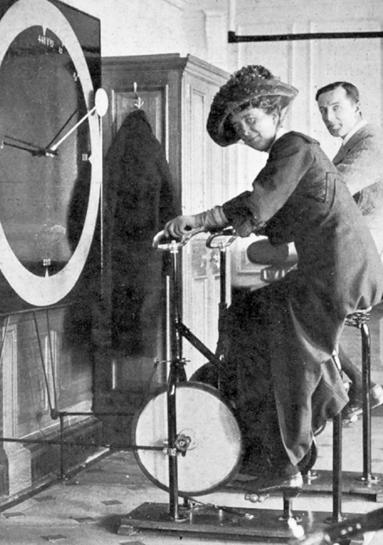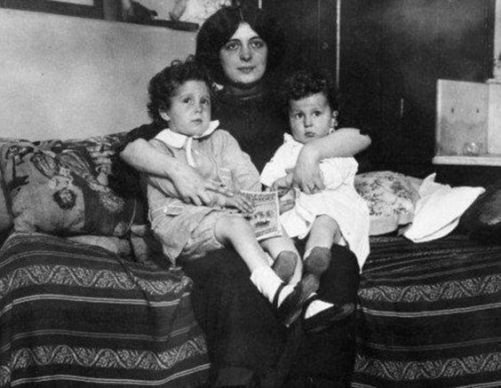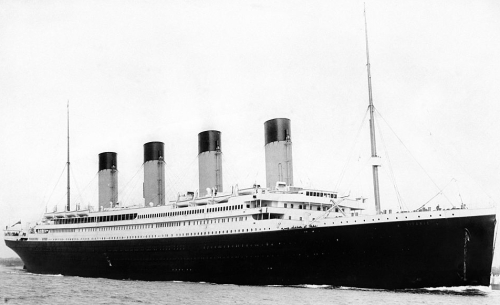Lawrence Beesley was a second-class passenger on the ill-fated Titanic, the White Star Line Liner that sank on its maiden voyage on 15 April 1912. A Cambridge-educated teacher, he had recently resigned his post as science master at Dulwich College, London. He was travelling to America for an extended holiday and had aimed to visit his brother who was residing in Canada.
Within weeks of the sinking the editor of the Boston Herald, Robert Lincoln O’Brien, ‘urged him as a matter of public interest to write a correct history of the Titanic disaster’. Within months Beesley had produced The Loss of the Titanic. In it, he describes having spent the night before departure in a Southampton hotel, where over breakfast on the morning of Wednesday 10 April 1912, he listened to fellow passengers discuss the likelihood of Titanic meeting with an accident. He later recognised those passengers onboard the Titanic. They did not answer to the roll-call onboard the Carpathia, the ship that rescued those lucky enough to make it into lifeboats.

Beesley noted in his account that there was ‘very little’ to report about the journey across the Atlantic after the ship had left Queenstown, Ireland (now Cobh) on Thursday and up to Sunday morning. The ocean was calm, so few people missed meals, but he reported that the ‘“fresh”’ westerly to south-westerly winds displayed on the Daily Chart made it too cold for passengers to sit on the deck to read or write. Passengers passed their time in the relaxing in the library and Beesley wrote many letters that he posted each day into the post box situated outside the library, sadly he wrote ‘possibly they are there yet’.
Titanic, on its journey across the Atlantic, developed a pronounced list prior to its collision with the iceberg. Beesley remembered in his book that the ship had begun to lean to the port side and he had queried it with the purser who explained that the list was ‘probably’ due to ‘most of the coal being used from the starboard side of the ship’ and therefore the left-side lilt could be explained. Beesley thought it important enough to recall in his account as ‘the previous listing to port may be of interest’.
He recalled also the steerage passengers enjoying their time on Titanic immensely, playing a ‘most uproarious skipping game’ and a ‘Scotchman with his bagpipes’. Possibly due to his time in the classroom observing the behaviour of students, he was a frequent observer of his fellow passengers. He witnessed a man who was travelling in steerage, whose wife was travelling in second-class, visit his wife at the gate of the second-class deck area, and ‘talk affectionately’ with her. His strong observation skills came into play when on the Carpathia where he would note whether specific passengers survived the disaster. This couple remained separated, as she was the only spouse present on the rescue vessel, her husband, presumed Beesley, lost. Lost also, were many from the third-class deck who had been ‘playing so happily’, he did not recognise many survivors from the third-class passengers when aboard the Carpathia.

On the final morning, Sunday 14 April 1912, a religious service was held by the purser in the saloon. The passengers who ventured onto the deck faced a bitter wind and most found it too cold to remain outside. Beesley supposed that the wind was artificial and a result of the speed the ship was travelling through the water. Once again in the library, Beesley met with a fellow passenger, Reverend Carter, with whom he had been chatting daily on the journey from Southampton. They resumed their discussion on the ‘relative merits’ of their respective universities, Cambridge for Beesley and Oxford for Rev. Carter.
Rev. Carter asked Beesley to speak to the purser on his behalf as there was an ‘absence of a service in the evening’ and he would like to hold a ‘“hymn sing-song”’ in the saloon. The purser consented and Rev. Carter invited many passengers to join him in the saloon at 8.30 p.m.
The library was crowded that final afternoon as it was too cold on deck and through the library windows, a ‘clear blue sky with brilliant sunlight’ could be observed. Passengers were looking forward to arriving in New York in two days and there was a ‘general satisfaction’ amongst those present.
Beesley’s memory remained clear and could describe the library in detail.
‘I can look back and see every detail of the library that afternoon – the beautifully furnished room, with lounges, armchairs, and small writing- or card-tables scattered about, writing bureaux round the walls of the room, and the library in glass-cased shelves flanking one side – the whole finished in mahogany relieved with white fluted wooden columns that supported the deck above. Through the windows there is the covered corridor, reserved by general consent as the children’s playground, and here are playing the two Navatril children with their father – devoted to them, never alone from them. Who would have thought of the dramatic history of the happy group at play in the corridor that afternoon! – the abduction of the children in Nice, the assumed name, the separation of father and children in a few hours, his death and their subsequent union with their mother after a period of doubt as to their parentage! How many more similar secrets the Titanic revealed in the privacy of family life, or carried down with her untold, we shall never know.’

Beesley shared his memories of that final afternoon, along with poignant descriptions of passengers relaxed in each others’ companies, families, children playing, mere acquaintances of a few days conversing as people do when confined to small spaces, images of regular people that were about to face tragedy. Of those in the library that final afternoon, Beesley recalled only two or three passengers that he would see again on the Carpathia.
After dinner was the planned ‘“hymn sing-song”’ led by Rev. Carter, with a Scottish engineer who shared the dinner table with Beesley as the pianist. One hundred passengers attended and sang hymns, ‘curiously’ Beesley remarked, many of those requested covered a nautical theme. The library hushed when ‘For Those in Peril on the Sea’ was sung. The sing-song lasted until after ten o’clock and was finished with a short speech from Rev. Carter reflecting on the ‘happiness and safety on the voyage hitherto’.

Beesley ended the evening after having coffee with both Rev. and Mrs Carter and retired to his room around quarter to eleven. He lay in bed reading for an hour and noticed increased vibrations that he assumed had come from the ship picking up speed.
Fifteen minutes before the end of the day, Titanic was fatally injured after colliding with an iceberg. Although the collision seemed to be a barely discernible change in speed and vibrations, Beesley noted what seemed ‘nothing more than an extra heave of engines and a more than usually obvious dancing motion of the mattress’ on which he sat. ‘Nothing more than that’. He became an important witness to the events of 15 April 1912. His powers of recall helping to document a personal account of the disaster of which fewer than half of the passengers survived.
You can read my other posts on Titanic by clicking the following links:
Titanic Captain Edward John Smith Lived Here
Sources:
The Loss of the Titanic, Lawrence Beesley
https://www.encyclopedia-titanica.org/titanic-survivor/lawrence-beesley.html
Images author’s own unless stated


That was fascinating. That’s the first I’ve read from an actual survivor, it’s kind of chilling imagining how he must have felt thinking of all those people
LikeLiked by 1 person
Very interesting and poignant. Never read such a personal account before.
LikeLiked by 1 person
All the ‘if only’ moments are creepy yet interesting to think about! Thanks, Ruby – a great insight.
LikeLiked by 1 person
That was interesting. I’ve never heard the story of the Navatril children?
LikeLiked by 2 people
I’m tempted to write about them. The father kidnapped them after separating from his wife but he went down with the ship. He’d travelled with them under pseudonyms. The children were claimed by their mother.
I’ve just realised the source I used (Beesley’s book) has the children’s name as Navatril but Google has Navratil.
LikeLiked by 2 people
It would make an interesting blog.
LikeLiked by 1 person
Thank you for sharing this…. Personally, I’ve always been fascinated by the legacy the mammoth ship has left behind and am always excited to read anything even closely related to it. Looking forward to more such posts! 😊✌️
LikeLiked by 1 person
Thanks. I started one about Beesley’s experience of the disaster, but he starts his book discussing the Sunday and I was fascinated by all his reflections I diverted my attention for a few days.
LikeLike
It’s amazing learning all about the titanic with more in-depth information, what a man being able to recollect exactly what had taken place, lovely piece yet again
LikeLiked by 1 person
Thanks 🙂 I was so chuffed to find Beesley’s book.
LikeLiked by 1 person
I must look out for it my mum loves the titanic too
LikeLiked by 1 person
Love love
LikeLike
A macrocosm of human nature in a microcosm of history. Surprising detail, including an elegantly clothed and hatted lady driving gym equipment, way back when. A treasure.
LikeLiked by 1 person
I’ve never heard of the Navratil children – guess I’ll be exploring said topic today. Thanks for a great read.
LikeLiked by 1 person
You’re welcome. They often pop up on the documentaries that I have watched on YouTube.
LikeLiked by 1 person
I’ll look for them there. Thanks!
LikeLiked by 1 person